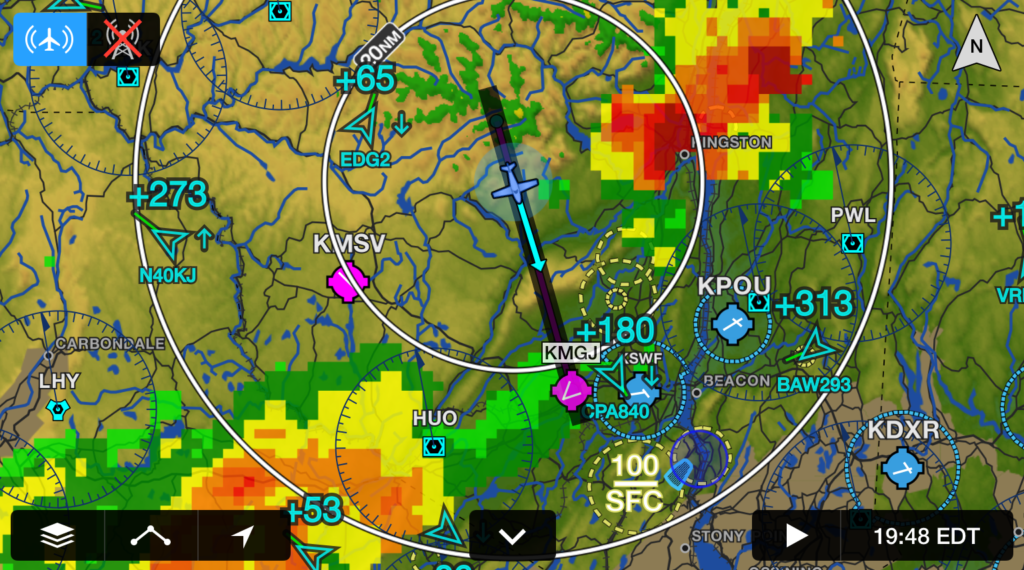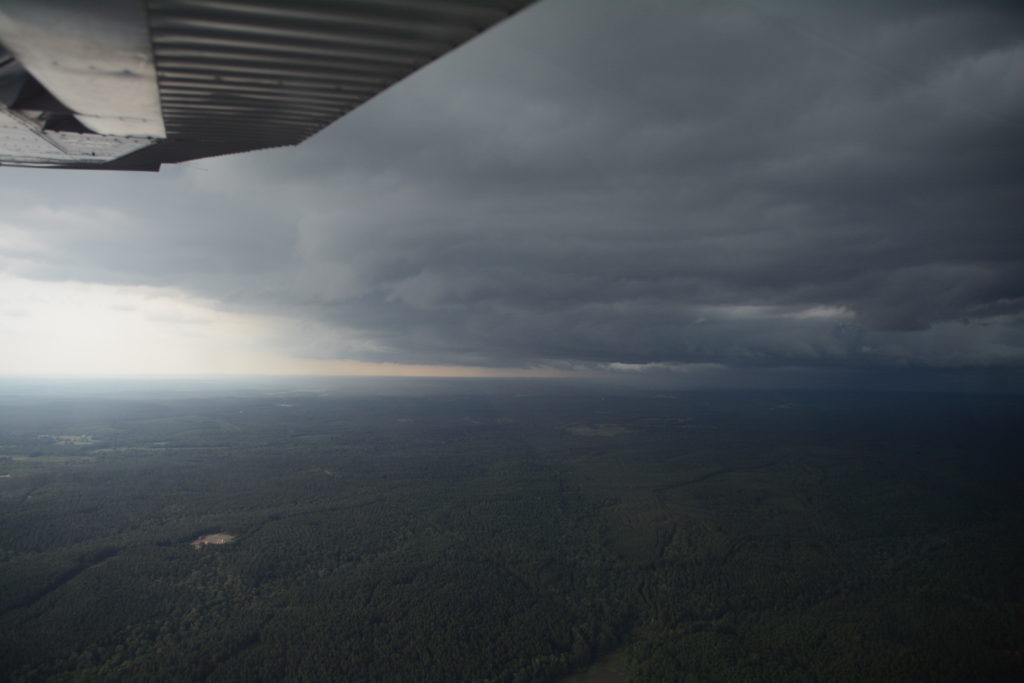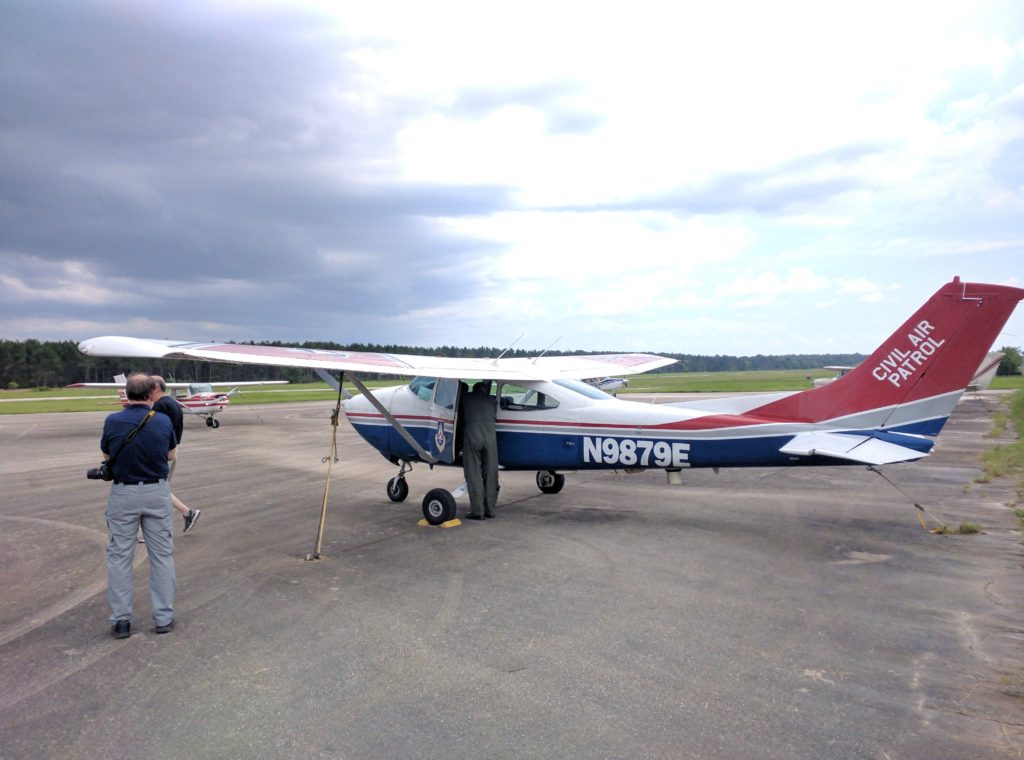With the implementation of ADS-B in the United States there’s suddenly a lot more information available for pilots to consume while in the air. Previously you’d need a subscription to something like Sirius XM weather to get updates on what the clouds look like along your route but now the FAA is providing a service that is just as good if not better and completely free of charge through something called FIS-B (Flight Information Service Broadcast). Over the last couple months I’ve been enjoying the benefits of that through a Garmin GDL-39 and without a doubt it has changed the way I fly for the better. One specific flight a couple weeks ago really showed where having FIS-B available is a major benefit.
I was out in Nacogdoches, Texas for some Civil Air Patrol training. I was on the second set of flights for the day and while the radar picture on the ground showed a line of thunderstorms moving our way the TAF didn’t predict their arrival until well after we had landed. It was going to be a short flight but one we could make with time to spare.
We loaded up into the 182 and headed off to start our aerial photography run. About five minutes into the flight my iPad updated with the latest FIS-B display of the situation around us and things were not looking good. The thunderstorms were moving much faster than anticipated. I shared the information with the Mission Pilot and we decided to turn back to the airport early. We were on final approach when the front edge of the storm hit, changing the conditions from “light and variable” to a 25 knot crosswind gusting to 45. It wasn’t safe to land and we immediately aborted the landing.
We were now in desperate need of an airport to divert into. The aircraft we had was equipped with an older GPS that displayed a list of the nearest airports, but without a bigger picture of the current weather we couldn’t be sure that our destination was clear and safe. Thanks to the FIS-B information I was able to see that our nearest airport wasn’t actually a good idea — the storm would get there before we did — and so I was able to locate another suitable substitute. From the back seat I called out the identifier and magnetic heading of our best alternate and the pilot immediately turned on course. I was even able to pick up the latest weather report from the field through FIS-B to confirm that the weather was perfect for our arrival.
We landed a few minutes later at KDKR, Houston County airport near Crockett, Texas. The strip had self service fuel and a tiny little house for us to sit out the storm and that’s about it — no FBO, no food nearby, nothing. Luckily the local sheriff arrived a few minutes later and drove us to a Mexican restaurant in town for dinner while we waited, and drove us back after the storm had passed.
In this case FIS-B really made all the difference. We could see the storm clearly out the cockpit window but that only gave us information about what was in our local area. FIS-B provided the big picture, told us what was going on further than we could see line-of-sight, and allowed us to make the decision to divert to an appropriate airport to wait out the storm. We probably would have been able to find somewhere to land without it but having that extra information available while in the air and in real time provided much better situational awareness than the Mk. I eyeball.
When flying cross country on an IFR flight plan that information can be the difference between a safe flight and one that ends in disaster. A few weeks prior I used FIS-B to navigate around a thunderstorm that appeared in my route from Massachusetts to Chicago. Instead of flying straight through a storm front I was able to see the thunderstorm forming in my path, divert around it, and safely navigate to South Bend when the storm decided to park itself over my intended destination instead of clearing as forecast. Weather can be unpredictable, and having the best information available in real time is a huge benefit.
Some of the older pilots can be a little slow to adjust to the latest and greatest technology in the cockpit. ADS-B adoption has been especially slow in general aviation. But given the quality of information that the ADS-B system provides pilots there’s really no reason not to have something like a GDL-39 or Stratus equipped iPad in every flight bag. For me, at least, I’m never leaving the ground without it ever again.


